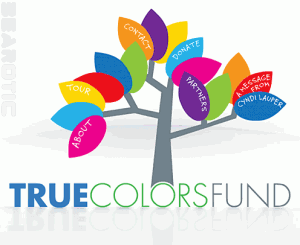 CHICAGO - After the Williams Institute, True Colors Fund and the Palette Fund released a critical study on LGBT youth homelessness last month, Chicago-based experts have weighed in and offered reaction to the study's findings that 40 percent of homeless youth identify as Lesbian, Gay, Bisexual, and Transgender and many agencies designed to meet their needs have failed to adequately address pressing concerns.
CHICAGO - After the Williams Institute, True Colors Fund and the Palette Fund released a critical study on LGBT youth homelessness last month, Chicago-based experts have weighed in and offered reaction to the study's findings that 40 percent of homeless youth identify as Lesbian, Gay, Bisexual, and Transgender and many agencies designed to meet their needs have failed to adequately address pressing concerns.
The study, conducted between October 2011 and March 2012, was designed to assess how homeless youth organizations provide services to LGBT youth. (See related story)
About 380 respondents from 354 agencies that serve homeless youth participated in the web-based survey.
Overall, the study found that the current network of homeless youth providers “is not adequately addressing the needs of gay and transgender homeless youth,” according to the Chicago Coalition for the Homeless.
The survey showed about 30 percent of homeless using housing-related services—emergency shelters and transitional living programs—were LGBT.
Among the top reasons why LGBT youth are homeless include: running away because of family rejection of sexual orientation or gender identity (46 percent), being forced out by parents because of sexual orientation or gender identity (43 percent) and physical, emotional, or sexual abuse at home (32 percent).
“Bottom line, youth homelessness has been an ongoing and steady issue, related to the impact of family and personal pressures on youth,” said Anne Bowhay, spokeswoman for the CCH.
Other organizations said they are also well aware of the issue of youth homelessness and what needs to be done.
UCAN, a Chicago-based nonprofit, touts its mission as to “build strong youth and families through compassionate healing, education and empowerment.”
Bonnie Wade, associate director at UCAN, said although there have not been any concrete LGBT homeless studies in the Chicago area, she noticed more than 60 percent of homeless youth self-identified as lesbian, gay or bisexual when she worked at a homeless youth shelter. She said there is such a significant number of LGBT youth homeless because of stress and lack of knowledge on LGBT issues in disadvantaged families.
“Let’s say you have a mom raising five children, and she’s a single parent and she has some kind of sickness,” Wade said. “She’s working a full-time job, she’s taking care of the five kids, so she’s already under a lot of stress and pressure. So let’s say her oldest son comes out as gay. It’s not easy, but sometimes it’s the final straw the breaks the camel’s back.”
Wade said if families were supported more and had access to resources, there would not be as many young people out on the streets.
“Because of systemic oppression and really poverty, sexism, racism and all of these -isms–all of this systemic oppression–it creates a permanent underclass of people,” she said.
Wade added that although the new study is an improvement on raising awareness for LGBT youth homelessness, there needs to be more study.
“We need more research on what ends homelessness specifically for LGBT young people: the housing model, what intervention strategies, what will it take to end homelessness among LGBT young people,” Wade said.
The Chicago Coalition for the Homeless posted a blog on the CCH’s website about the study. Authors Andrew Phifer and Jeff Krehely listed five key findings from the studies and the action needed in response to each finding.
One such finding showed nearly 60 percent of the responding agencies reported, “that transgender youth are in worse physical health than other youth,” according to the blog.
As a response, Phifer and Krehely wrote, “action needed: improve data collection by including sexual orientation and adding gender identity metrics to the Center for Disease Control’s biennial Youth Risk Behavior Survey at the state level.”
Most statistics about LGBT youth come from local or regional surveys, so the authors wrote in support of a national survey conducted on a regular basis.
“The results of this survey act as further confirmation that America’s next generation of gay and transgender youth need us to stand with them so that they can stand on their own,” Gregory Lewis, executive director of Cyndi Lauper’s True Colors Fund, said in a Williams Institute statement accompanying the report.
Audrey Cheng is a reporter with The Chicago Bureau.
Photo from the International Lesbian, Gay, Bisexual, Trans and Intersex Association.
